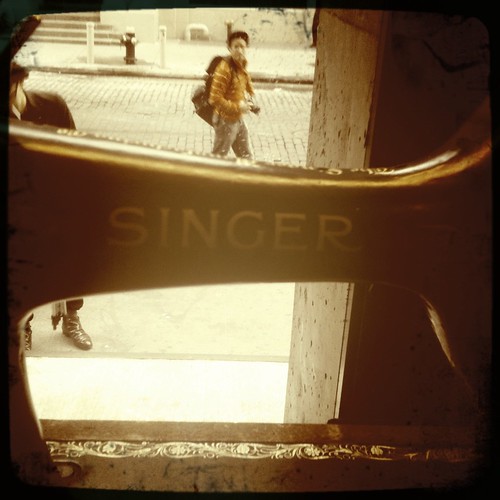Dorchester Chaplains - (1943)
"We had the gold rush wars
Why didn’t we learn to crawl?
And now our history gets written in a liar’s scrawl
They tell me, 'Don’t be so uptight!
I mean, honey, you can still be an Indian
Down at the Y on Saturday night.'"
BUFFY ST. MARIE
This weekend I join 2500 or so others in Minneapolis for an event called "Creating Change". Organized by the National Gay and Lesbian Task Force (the nation's oldest LGBT organization), it is the largest conference of LGBT community organizers in the nation.
This year, for the first time, there is a "concentration" within the larger conference of religious folk. Entitled "Practice Spirit, Do Justice" it was focused on providing faith leaders with more specific networking opportunities and tools for promoting LGBT rights goals within the religious space.
 |
"Big Pilot" by Chris Murphy
Used under Creative Commons license |
Due to the latest in a line of "snowmageddon" experiences this winter hath wrought, my original flight on Wednesday was cancelled and I was re-accommodated on a 6:15 a.m. nonstop on one of the little tinker toys that are seemingly becoming the mainstay of the domestic airline fleet. Thus I was fairly groggy when I bumbled through the wonderful second-story Habitrail that protects the public from Minneapolis's winter weather, negotiated the registration materials, and found my first session.
The first event for me was organized by the First Nations Two-Spirit Collective. "First Nations" is a term coined in Canada to more accurately describe what are otherwise known as "native American" or "American Indian" tribes. "Two Spirit" is, as explained by group member Coya Artichoker, a modern blanket term that evokes the tradition within several tribal cultures that LGBT people possess both a male and female identity.
The group led us through an exercise in which we were asked to record values we considered important on squares of paper. This took a while as there were over 100 people in the room. These were collected and read out loud under some general categories to save time. Then they were symbolically "taken away".
Next we were asked to self-identify by ethnic or cultural background. Little by little, everybody except the first nations folks were herded into one corner of the room. Gradually, using a rope, we were corralled into a smaller and smaller space, getting closer and closer to strangers. Attempts at personal space or staying with your friends fell by the wayside. The meaning became clear. It was awkward, and, menacing, and sad.
 |
"Heart of Wounded Knee" by Jonathan Hamner
Used under Creative Commons license |
All of this was meant to symbolize the systematic destruction of tribal cultures, traditions and homelands by the incoming European population. In addition to being driven from their lands, first nations people were forbidden to practice many aspects of their own cultures, including religion, and forced to adopt Christianity and Western dress. Resistance to this compulsive assimilation culminated in the spread of the Ghost Dance movement among numerous western tribes, as well as the Wounded Knee massacre, both in the 1890s. The Wounded Knee incident, in which over 150 Lakota were killed by U.S. soldiers, helped begin turn the tide of white America's attitude toward tribal people, albeit after the damage had been done.
The exercise was definitely an attempt to "afflict the comfortable" and ... at least in my case... it worked. As we stood there, awkwardly close, one of them began singing and plunged into the knot of "captives", walking among us. The words were not English, but -- as her compatriots demonstrated -- it was clearly a form of call-and-response. The rest of us listened, unsure of what was going to happen next. The leader, sensing our confusion, commanded softly, "If you wanna get out of here, you better start dancing." One by one, people hesitantly joined the impromptu "conga line" and the song, mumbling at first at the unfamiliar syllables, then more confidently.
Gradually the captives became marchers, and soon the line snaked around the ballroom. A smudge pot of sorts, wafting some kind of fragrant spicy incense, was borne around the room by one of the leaders, and each of us was offered the chance to wave some of the smoke over us. Nobody refused. I was worried that someone would express affront or anger at being "cornered" as we were, but it appeared everybody "got it" and -- as people shared their reactions -- it was clear that people felt closer, not alienated. Any "white liberal guilt" we felt was our own; these folks were actually giving us a gift by, gently but frankly, letting us experience part of our common history and see things from a perspective from which our own culture and education has largely "spared" us.






